Injured Student Athletes
CPS has established procedures and policies for all student athletes regarding injuries that occur during interscholastic athletic activities and concussion protocol.
If a CPS is injured participating in school and IHSA sanctioned interscholastic activities:
- After overseeing/approving the immediate and/or necessary care of the student, the parent/guardian should follow up with the school to make sure that an incident report was submitted into ASPEN (the student information program) on behalf of the student.
- The parent/guardian should look to be provided with a report which documents the incident but also lists the appropriate contact information in order to file an insurance claim on behalf of the student (if necessary). Note: any insurance coverage arranged through this process is supplemental to the insurance that the student may already have.
- The parent guardian should follow the instructions provided on this report. Instructions are included to guide the parent/guardian in case the student is not covered by insurance.
If the student has suffered a head injury (suspected concussion) and has been removed from a contest:
- The student must enter concussion protocol which is governed by the CPS Concussion Policy as well as the Concussion Guidelines.
- Once a student is designated to the concussion protocol by being removed from an interscholastic contest because of a suspected head injury, there are two concepts which must be understood: Return to Learn and Return to Play
Return to Learn
Please be advised that coaches MAY NOT authorize athletes to return to classroom.
Students are encouraged to get medical evaluation before returning to class when removed from play.
Schools should follow the guidance provided by the Center for Disease Control and Prevention CDC Heads Up – Returning to School. For students that have significant concussive symptoms, academic accommodations may be required. Accommodations should be individualized according to physician’s recommendation and student’s symptoms. If a student has ongoing symptoms of a concussion and has been approved to return to the classroom it may be appropriate to convene a meeting which includes the school nurse, parents, and school personnel to determine the next steps which may include a 504 accommodation plan.
Return to Play
Please be advised that coaches MAY NOT authorize student-athletes to Return to Learn or Return to Play. Students believed to have suffered a concussion MAY NOT return to athletic activities until they have successfully resumed classroom activities.
Students are only allowed to Return to Play after providing medical clearance. Students who are believed to have suffered a concussion must be evaluated by a treating physician, or an athletic trainer working under the supervision of a physician, chosen by the student’s parent/guardian. The treating physician or trainer must provide a written statement demonstrating that in their professional judgment it is safe for the student to return to learn and return to play before the student is allowed to resume athletic activity. All such written statements must be signed by attending physicians; statements provided by an athletic trainer working under the supervision of a physician must be signed by the supervising physician. In the event that a student athlete has been formally diagnosed with a concussion by the treating physician or trainer, a school representative (primarily the Athletic Director) must collect the Post-concussion Consent Form issued by the IHSA, completed by the student and parent/guardian, and keep it on file at the school prior to the student resuming classroom attendance.
Once a student has been cleared to play by the treating physician or trainer, the school representative must indicate the date that the student was cleared on the Post-concussion Consent Form submitted on behalf of the student. For students returning to play after suffering a concussion, schools should follow the guidance provided by the Center for Disease Control and Prevention at CDC Heads Up Returning to Sports and Activities. Students should return to athletic activity progressively.
Schools should follow the Return to Play progression of activities recommended by the CDC:
Baseline: Back to School – Student has returned to normal school activities, is no longer suffering concussion symptoms and has been approved by the medical provider to begin sporting activities.
Step 1: Light Aerobic Activity – Student should do light aerobic exercise to increase heart rate. This activity should consist of 5-10 minutes on an exercise bike, light jogging, or walking. STUDENTS SHOULD NOT BE WEIGHTLIFTING AT THIS POINT.
Step 2: Moderate Activity – Student should progress with activities that increase heart rate and include head and body movement. This includes jogging, brief running, moderate-intensity stationary biking, moderate-intensity weightlifting. Student should limit weightlifting activities to less weight than typical and/or less time than typical.
Step 3: Heavy, Non-Contact Activity – Begin heavy non-contact activity including sprinting/running, high-intensity stationary biking, non-contact sport-specific drills.
Step 4: Practice and Full Contact – Student returns to controlled practice and full contact activities.
Step 5: Competition – Student returns to competition.
The student’s parent/guardian and coaches should monitor the student for concussion symptoms throughout their re-entry into sports activities. If any of the student’s concussion symptoms return, or if they exhibit any new symptoms, the student should stop athletic activity and a medical provider should be contacted.


